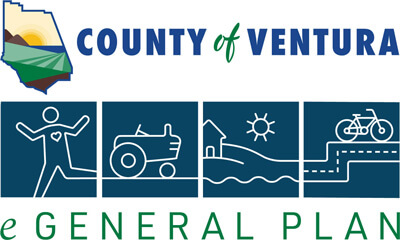The potential exists for offshore oil accidents and spills in Ventura County involving petroleum products due to oil and gas development, transportation of liquid bulk products by tanker, and other vessel traffic carrying petroleum products for fuel. An offshore spill can result in oil-contaminated beaches. The major potential sources of offshore spills are separated into the following categories:
- Oil Platform Production. There are four platforms in federal waters offshore Ventura County. They are Chevron’s Platforms Grace and Gail and Unocal’s Platforms Gina and Gilda. There are no platforms in state waters (i.e., within three miles of shore). Rincon Island contains 68 inactive well ports that are being decommissioned. There are additional platforms in state and federal waters offshore Santa Barbara County. The probability of an oil spill from a platform is small but possible. As a result of the Santa Barbara Oil well blowout in 1969, operating and safety requirements were substantially strengthened. During drilling, all offshore wells are equipped with redundant blowout protectors that can be closed hydraulically from a remote-control station in the event of a blowout.
- Vessel Traffic. The number of liquid bulk carriers presently transiting the Santa Barbara Channel is estimated to be between one and three per day. The Alaskan tankers may each carry as much as 1.5 million barrels of oil although the average is about 675,000 barrels. The other tankers are much smaller carrying 100,000 to 300,000 barrels. Although the probability of a tanker spill is low, it is possible. Potential causes of spills include collisions, rammings, groundings, and structural failures. The other commercial vessels transiting the channel carry fuel (bunkers), which can be released in the event of an accident.
- Subsea Pipelines. All of the platforms listed in the oil platform production section ship their oil to shore via subsea pipelines. Potential causes of pipeline spills include corrosion, mechanical defects, and ruptures caused by events such as anchor dragging or earthquakes. Oil pipelines are normally equipped with various sensors and/or valves that will allow the pipeline to be shut down rapidly and automatically in the event of a rupture.
- Marine Terminals. Fuel is off-loaded at the Port of Hueneme for the Ormond Beach power plant. Spills from marine terminals can be caused by operation errors or a rupture or leak in the loading/unloading lines.
- Onshore Oil Pipeline Spill. Similar to a marine oil spill, an onshore oil pipeline spill can be a serious hazard to surface and groundwater resources, property, animals and human life. Oil and gas transport lines have been mapped on the County’s Geographic Information System (GIS) to allow improved response to spills in the event of pipeline system failure or a seismic event. Although available to emergency responders and planners, GIS information on the location of these transport lines is proprietary and contact must be first made with the California State Fire Marshall.
